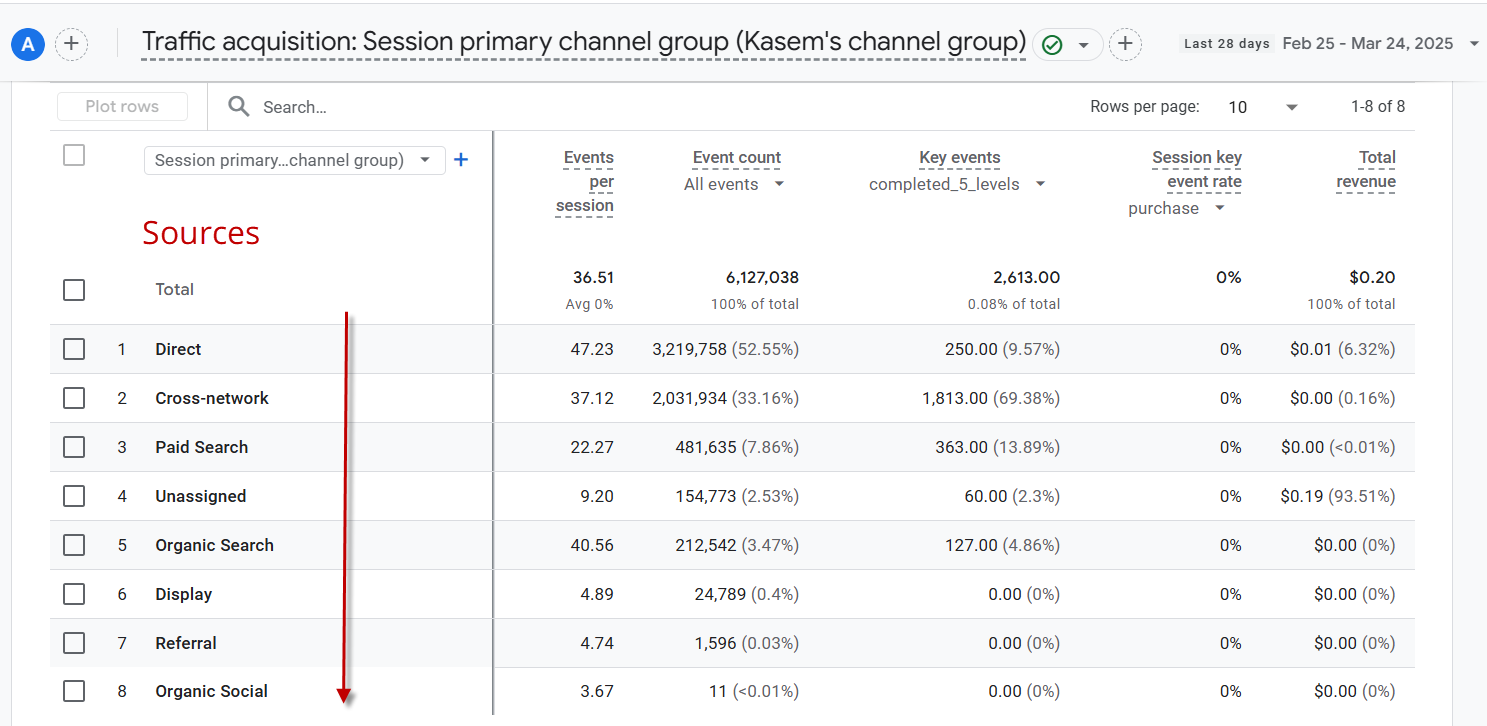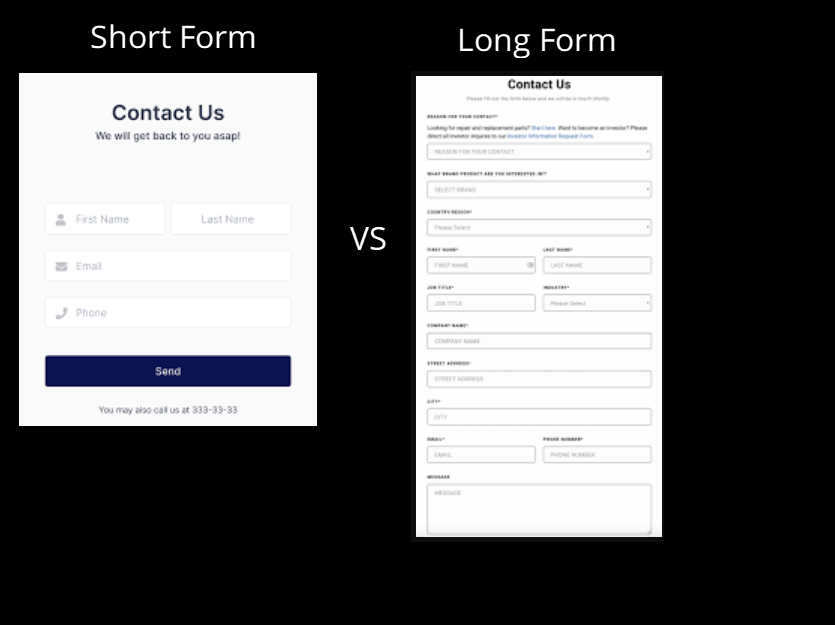Introduction
Generating leads is only half the battle—what truly matters is their quality. If your sales team is drowning in junk leads, it’s time to refine your strategy. Poor quality leads waste time, increased costs, and lower conversion rates.
This 5-step framework will help you audit, optimize, and scale your lead generation process to attract the right audience.
Step 1: Review Your Target Audience
Before making any changes, revisit your target audience to ensure your messaging and targeting are aligned.
Key Actions:
✅ Check your ad campaigns – Analyze audience settings in Google Ads, Facebook Ads, and LinkedIn Ads. Are your ads reaching the right people?
✅ Analyze Google Analytics (GA) & CRM Data – Identify the demographics, interests, and behaviors of users who convert. Are junk leads coming from specific sources?
✅ Define Your Ideal Customer Profile (ICP) – Your Ideal Customer Profile (ICP) is a detailed description of the perfect customer who benefits the most from your product or service. Defining your ICP helps you filter out unqualified leads and focus on prospects who are more likely to convert.
An effective ICP includes:
- Company size (for B2B) or demographics (for B2C)
- Industry & niche
- Pain points & challenges
- Buying intent & behavior
- Budget & decision-making process
🔍Understanding customer pain points and buying behavior is crucial for improving lead quality, yet it remains one of the most challenging aspects of marketing. Without deep insights into what drives purchasing decisions, even the best campaigns risk missing the mark
Here are some great tools to help you create your Ideal Customer Profile (ICP):

✅ Use can use the below tools to review and refine your targeting:
- Google Analytics (GA4)
- HubSpot Buyer Persona Tool
- LinkedIn Audience Insights
- Semrush Audience Research
Step 2: Audit Your Lead Sources
Not all leads are created equal. Some sources drive high-quality prospects, while others flood your CRM with junk. To improve lead quality, analyze all lead sources—paid, organic, direct, referral, social, and email—to identify where your most valuable leads are coming from.
Key Actions:
✅ Check Lead Sources in Your CRM – Use your CRM (HubSpot, Salesforce, Zoho, etc.) to track where each lead originated. Compare the quality and conversion rates across different sources.
✅ Analyze Performance by Channel – Review leads coming from paid ads, organic search, direct traffic, referrals, social media, and email marketing to identify which channels generate the most engaged and qualified prospects.
✅ Filter Out Junk Leads – Look for patterns in low-quality submissions (fake emails, incorrect phone numbers, irrelevant job titles) and pinpoint the specific channels contributing to them.
✅ Optimize Only Where Necessary – If a particular lead source is bringing in a high volume of junk leads, refine targeting, adjust messaging, or tweak lead forms for that channel. Avoid unnecessary changes to sources that are already delivering high-quality leads.
🛠 Tools to Audit Lead Sources:
- CRM Systems (HubSpot, Salesforce, Zoho, etc.) – Track and analyze lead origins, engagement, and conversion rates.
- Google Analytics & Google Tag Manager – Monitor traffic sources and behavior on landing pages.
- Facebook, LinkedIn & Google Ads Reports – Evaluate paid campaign performance and refine targeting if junk leads are detected.
- SEMrush & Ahrefs – Assess organic search lead generation effectiveness.
💡 Pro Tip: Instead of making broad changes, focus your optimizations only on the sources generating junk leads. This ensures you enhance lead quality without disrupting successful channels.

Step 3: Optimize Lead Quality Through Better Forms & Testing
Your lead capture forms play a critical role in filtering out junk leads and attracting high-quality prospects. A poorly designed form can result in irrelevant submissions, while a well-structured one can help pre-qualify leads before they enter your sales pipeline.
How to Optimize Lead Quality Through Forms & Testing
To improve lead quality, follow these key steps:
✅ Review Your Forms: Analyze the performance of your lead forms—are they bringing in the right audience? Check form fields, submission rates, and drop-off points to identify areas for improvement.
✅ Ask the Right Questions: Gather insights by surveying your existing customers or new leads. Ask about their challenges, needs, and decision-making factors. Adding qualifying questions in your forms (e.g., budget range, company size, or specific needs) can help filter out unqualified leads.
✅ Test and Optimize: Experiment with different form formats—long-form vs. short-form, multi-step vs. single-step—to find the right balance between lead quantity and quality. A/B test form designs, question types, and CTA placements to maximize conversion rates.
By continuously reviewing, refining, and testing your lead capture forms, you can reduce junk leads and attract prospects genuinely interested in your offerings.
🤔 Long-Form vs. Short-Form Dilemma: Choosing between long and short lead forms can be tricky.
– Short forms (fewer fields) increase the number of leads but often attract low-quality or unqualified submissions.
– Long forms (more fields) deter casual visitors but ensure only serious prospects fill them out.
Here’s an example:

💡 Best Practice: Find a balance based on your business needs. If lead quality is a concern, include key qualifying questions like “Company Size” or “Project Budget” to filter out irrelevant leads. A/B test different lengths to determine what works best for your audience.
Recommended Tools for Form Optimization & Testing:
🛠 Typeform & JotForm – Interactive and dynamic forms
🛠 Unbounce – A/B test different form designs
🛠 Google Optimize – Experiment with form length & layout
🛠 Clearbit – Autofill company details, reducing user friction
By refining your lead forms, you increase conversion rates without sacrificing lead quality—giving your sales team fewer, but higher-quality leads to work with. 🚀
Step 4: Increase High-Quality Leads with Lead Magnets
Attracting high-intent leads requires offering value. Lead magnets act as a filter, ensuring that only genuinely interested prospects engage.
Lead Magnets: A Magical Way to Attract High-Quality Leads

Lead magnets are a game-changer when it comes to generating high-quality leads. They work like a filter, ensuring that only genuinely interested prospects engage with your business. Instead of attracting random visitors, lead magnets draw in potential buyers who see real value in what you offer.
Powerful Lead Magnets:
✅ Exclusive eBooks & Whitepapers – Only serious buyers download in-depth content.
✅ Free Tools & Calculators – Offer something useful to encourage qualified sign-ups.
✅ Webinars & Live Demos – Those willing to attend a session are more engaged.
✅ Case Studies & Reports – Build trust and attract high-quality prospects.
🛠 Tools for Lead Magnets:
- Canva (eBook creation)
- HubSpot (lead magnet integration)
- Calendly (demo booking)
Step 5: Implement Lead Scoring & Automation
Not all leads are created equal. Lead scoring is a data-driven method to prioritize leads based on their likelihood to convert, ensuring your sales team spends time on the most promising prospects.
Key Actions:
✅ Assign points based on engagement – Higher scores for actions like demo requests, webinar attendance, or multiple website visits.
✅ Set up automation – Automatically nurture semi-qualified leads with emails or chatbots.
✅ Segment leads – Send different follow-ups based on score.
🛠 Top Lead Scoring & Automation Tools:
- HubSpot Lead Scoring
- Marketo
- Pardot by Salesforce
- Drift (AI chatbots for real-time qualification)
Summary: A Continuous Process of Optimization
Reducing junk leads and improving lead quality isn’t a one-time task—it’s an ongoing process of reviewing, auditing, and optimizing. The key takeaways:
✔️ Review and refine your target audience
✔️ Audit lead sources and eliminate junk lead generators
✔️ Optimize lead capture forms and use A/B testing
✔️ Attract quality leads with strategic lead magnets
✔️ Score and automate lead nurturing for better conversion rates
Bonus Tip: A/B Testing for Continuous Improvement
Never assume your strategy is perfect. Test everything—from ad copy and landing pages to form fields and lead nurturing emails. A/B testing helps you continuously refine your approach for better results.
🚀 Ready to reduce junk leads and boost conversions? Set up a free 30-minute call with our experts to review your lead campaigns and identify areas for improvement. Let’s optimize your lead quality together!
Sandeep Malviya
Sandeep Malviya is the Associate Director of Organic Growth at EvenDigit, with over 15 years of experience in digital marketing. He is the founder of the CCD Framework, which consists of Collaboration, Customized Strategies, and Data-Driven Marketing—a framework essential for the success of any business's marketing efforts. He is also a recognized leader in data analytics and marketing automation.
As a digital marketing consultant, Sandeep crafts tailored strategies to help businesses enhance their online presence and achieve sustainable growth. Read More






